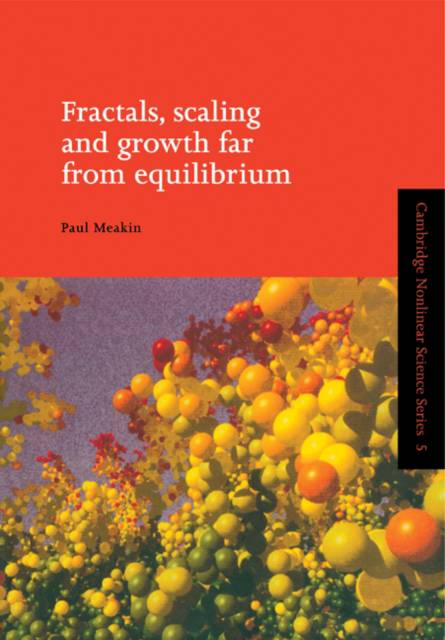
- Afhalen na 1 uur in een winkel met voorraad
- Gratis thuislevering in België vanaf € 30
- Ruim aanbod met 7 miljoen producten
- Afhalen na 1 uur in een winkel met voorraad
- Gratis thuislevering in België vanaf € 30
- Ruim aanbod met 7 miljoen producten
Zoeken
Omschrijving
This 1998 book describes the progress that had been made towards the development of a comprehensive understanding of the formation of complex, disorderly patterns under conditions far from equilibrium. The application of fractal geometry and scaling concepts to the quantitative description and understanding of structure formed under non-equilibrium conditions is described. Self-similar fractals, multi-fractals and scaling methods are discussed, with examples, to facilitate applications in the physical sciences. Computer simulations and experimental studies are emphasised, but the author also includes discussion of theoretical advances in the subject. Much of the book deals with diffusion-limited growth processes and the evolution of rough surfaces, although a broad range of other applications is also included. The techniques and topics will be relevant to graduate students and researchers in physics, chemistry, materials science, engineering and the earth sciences, interested in applying the ideas of fractals and scaling.
Specificaties
Betrokkenen
- Auteur(s):
- Uitgeverij:
Inhoud
- Aantal bladzijden:
- 694
- Taal:
- Engels
- Reeks:
- Reeksnummer:
- nr. 5
Eigenschappen
- Productcode (EAN):
- 9780521189811
- Verschijningsdatum:
- 28/04/2011
- Uitvoering:
- Paperback
- Formaat:
- Trade paperback (VS)
- Afmetingen:
- 170 mm x 244 mm
- Gewicht:
- 1088 g

Alleen bij Standaard Boekhandel
+ 253 punten op je klantenkaart van Standaard Boekhandel
Beoordelingen
We publiceren alleen reviews die voldoen aan de voorwaarden voor reviews. Bekijk onze voorwaarden voor reviews.











